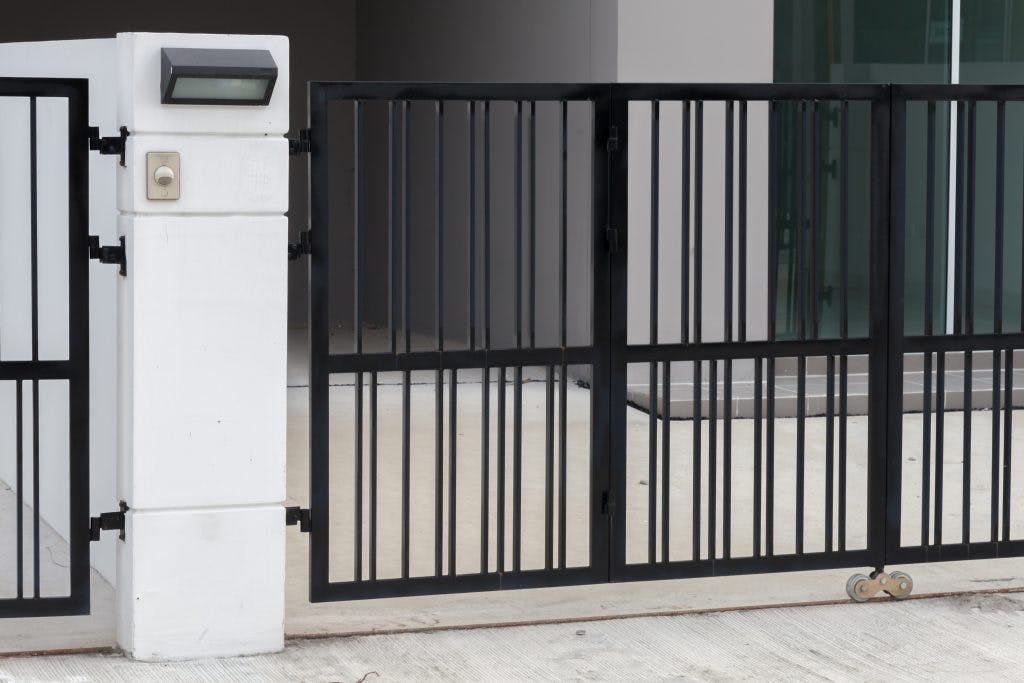Understanding Electric Gate Issues
Are automatic gates dangerous?
Electric gates are entryways powered by an automatic mechanism. A casually used technology, electric gates may be as common as elevators in some communities.
Since they’re so common, it can be easy to forget that these are powerful, technological devices. The most common injuries associated with electric gate issues are broken bones and strangulation. In some cases, electric gates may even be lethal.
In 2001, the U.S. Consumer Product Safety Commission (CSPC) issued an alert about electric gate injuries. Since 1985, the CSPC has tracked 32 deaths related to automatic gates. Of the deaths, 20 were children.
More than 2,000 people, including 800 children, visit hospital emergency rooms for cuts, lacerations, broken bones, hematomas and amputations each year, the LA Times wrote in 2001.
“At its most fundamental level, an automatic gate is roughly 500 lbs of metal being moved with a respectable amount of force and speed by a mostly mindless machine,” according to the Automatic Gate Resource Center (AGRC). “If care is not taken to ensure that the system is safe, it is unnervingly easy for someone to be seriously injured or killed.”
What are the risks of automatic gate systems?
Electric gates have very little restrictions or safeguards. The majority of risk management relies on “safety by design,” which is the belief that if something is designed well and assembled properly, it’s safe.
In fact, life-saving safety devices aren’t mandatory for installation. Some people don’t purchase the safety devices, viewing it as an “an appealing way to save a couple thousand dollars” according to AGRC.
Electric gates rely on “safety by design,” which means an incorrect installation is the biggest risk. This is far from the only risk though, as UK-based North Valley Forge is quick to point out.

Some other common risks from a correctly installed electric gate include:
- Crushing - Closing with an individual in the path of closure.
- Impact - Striking an individual in the path of closure and the individual moves out of the path the impact.
- Shearing - damaging a parallel object such as a wall and risking derailment.
- Entrapment - trapping an individual is involuntarily by the gate either opening or closing.
- Hooking - Catching clothes or body parts by protruding parts of the gate.
- Drawing in - Catching on clothing and drags an individual into the mechanism.
Most of these issues arise from the fact that electric gates are designed to operate until the gate is either open or closed. This means the automatic gate will not react to outside influences.
Additional dangers can include electrocution, hydraulic bursting (exploding mechanisms), and other minor hazards from faults in manufacturing or installation.
Electric Gate Safety Features
How to Prevent Automatic Gate Problems
Although electric gates can be dangerous and even deadly, many of the risks can be avoided with proper precautionary measures. Several devices and practices exist to prevent injury and maintain consumer safety when using electric gates.
The most important measure is to make sure any electric gates are installed by an experienced professional. Professionals should always leave a copy of the operations manual upon completion. Additional safety precautions include the installation of specific mechanisms, such as:
- Infrared Sensors - Devices like “photo-eyes” and infrared sensors can also be installed to detect any objects that may lie in the path of the gate. When these gadgets detect an obstruction, they won’t allow the gate to open or close until the object is removed.
- Pressure Ribs - Installing pressure sensitive ribs on the connecting edge of the gate can also prevent injuries during use. If the ribs encounter an object while the gate is closing, they will immediately stop the closure. Some models will even re-open the gate.
- Limitation Monitors - Pressure limitation tools are vital devices that detect the average amount of pressure required to close the gate. A pressure limitation monitor will shut the gate off if it detects pressure is above normal levels.
Another key to ensuring the long-term safety and reliability of an electric gate is to have it routinely checked by a professional and to avoid DIY repairs to the mechanism.
Installing An Automatic Gate
Electric gates are dangerous when used incorrectly, but they are in no way unsafe. By taking simple steps, like verifying correct installation and adding a manual release, electric gates are no more dangerous than a car or garage door.
Thousands have been affected by such a seemingly benign tool, and it’s important to be aware of the risks. But with proper attention and good practices, electric gates can become a safe and convenient addition to any house or business.

